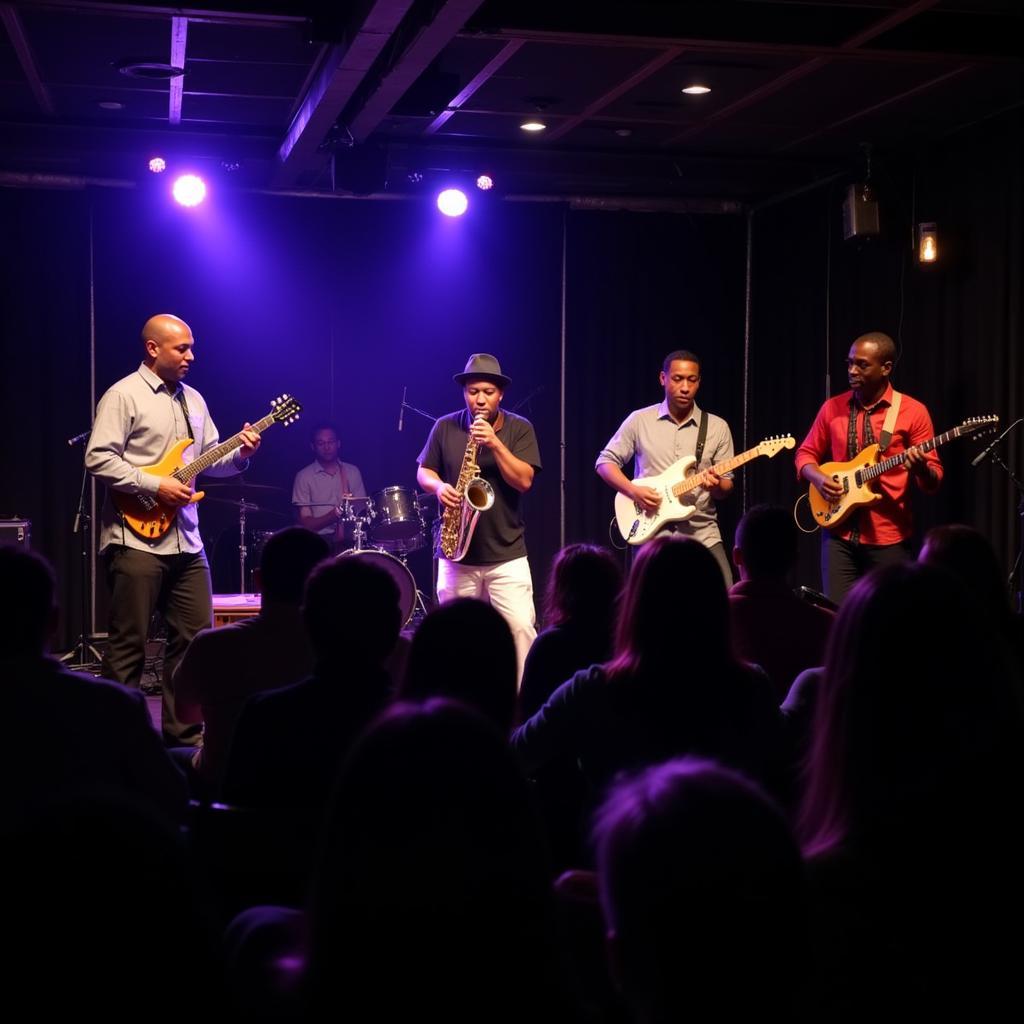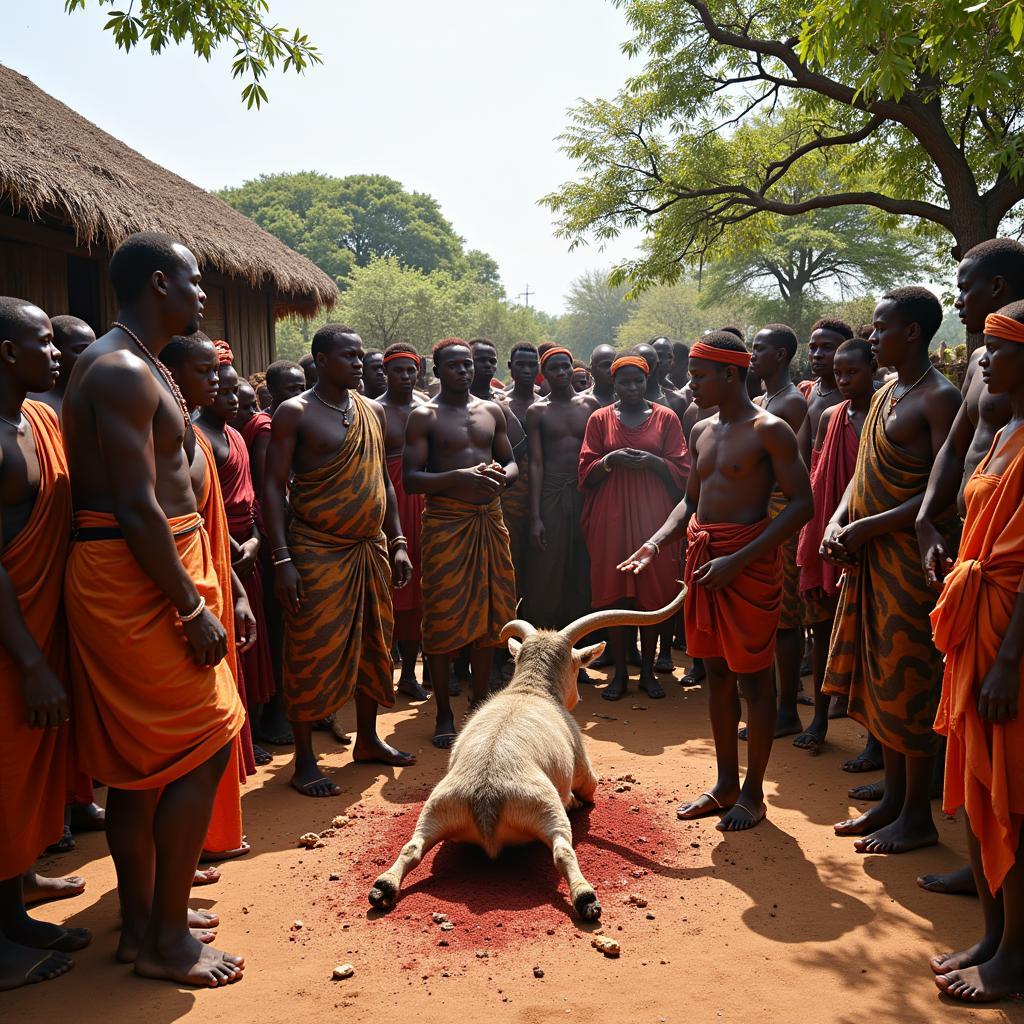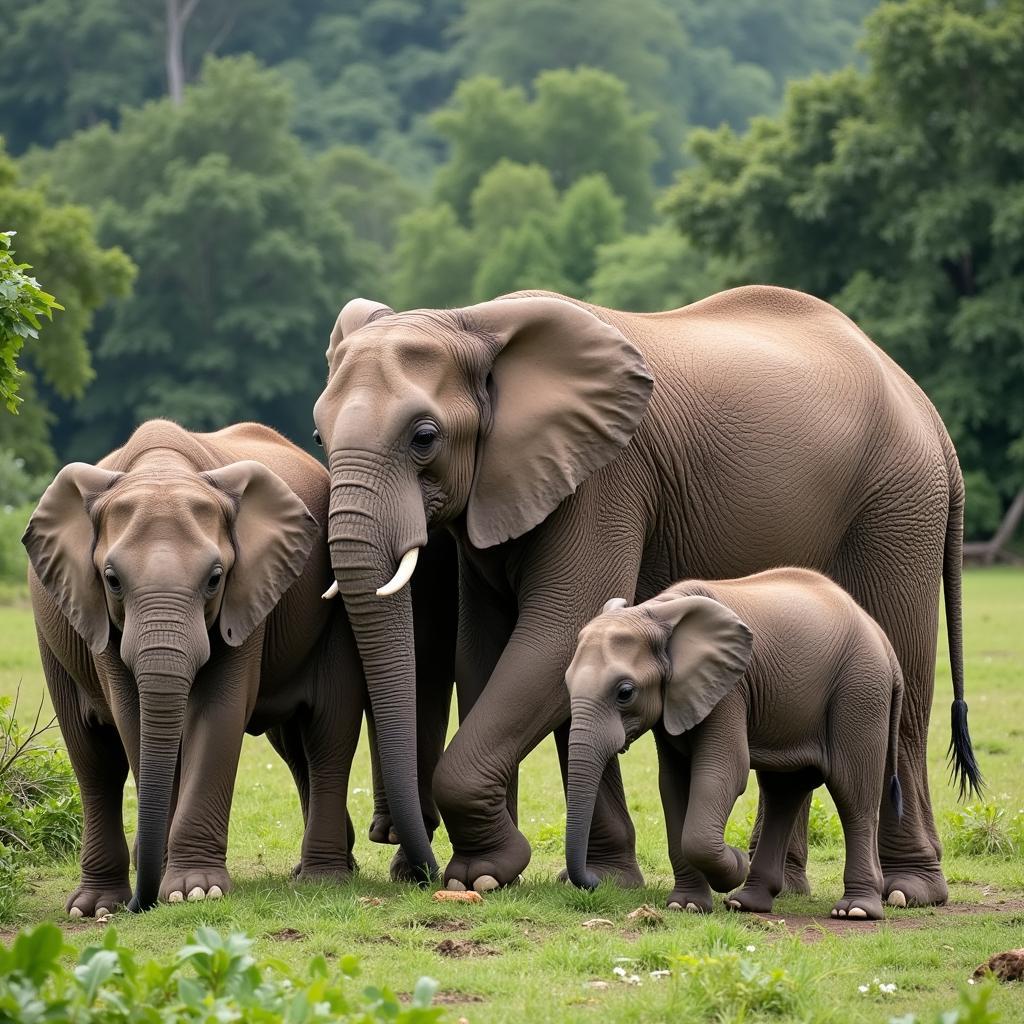Unveiling the African Goliath Frog: A Gentle Giant of the Rainforest
The African Goliath Frog, scientifically known as Conraua goliath, is a sight to behold. As its name suggests, this amphibian reigns supreme in the realm of frogs, earning its title as the largest living frog on Earth. Found exclusively in the rainforests of Cameroon and Equatorial Guinea, this gentle giant captivates with its impressive size and unique life cycle.
A Giant Among Frogs: Size and Appearance
 African Goliath Frog Size Comparison
African Goliath Frog Size Comparison
Imagine a frog larger than a dinner plate! African Goliath frogs can grow up to 13 inches in length from snout to vent, with their outstretched legs reaching over 3 feet. Their weight is equally impressive, with some individuals tipping the scales at over 7 pounds. Their skin, typically a mottled brown or green, provides excellent camouflage against the rainforest floor. This, coupled with their incredible leaping abilities – up to 10 feet in a single bound – makes them adept at ambushing unsuspecting prey.
Habitat and Lifestyle: A Life Aquatic
True to their rainforest home, African Goliath frogs are highly aquatic, preferring the fast-flowing rivers and streams characterized by clear, oxygen-rich water and sandy bottoms. These frogs are crepuscular, meaning they are most active at dawn and dusk, emerging from their hiding places to hunt. Their diet consists mainly of insects, spiders, crabs, and even smaller frogs.
 African Goliath Frog Habitat
African Goliath Frog Habitat
Life Cycle and Reproduction: Guardians of the Nursery
African Goliath frogs have a fascinating life cycle. Unlike most frog species where the males guard the eggs, female Goliath frogs take on this crucial role. After mating, the female constructs a small, rock-enclosed “nursery” near the water’s edge, where she lays hundreds of eggs. She fiercely guards these nests, protecting her offspring from predators until they hatch into tadpoles.
“The dedication of the female Goliath frog to her offspring is truly remarkable,” shares Dr. Kenani K. Mubwanzi, a herpetologist specializing in African amphibians. “It highlights the diversity of parental care strategies within the animal kingdom.”
Threats and Conservation: A Species at Risk
Despite their impressive size and strength, African Goliath frogs face an uncertain future. Habitat loss due to deforestation, driven by agriculture, logging, and human encroachment, poses a significant threat. Over-collection for the pet trade and consumption as bushmeat further compounds the problem.
 African Goliath Frog Conservation Efforts
African Goliath Frog Conservation Efforts
Recognizing these threats, conservation organizations are working tirelessly to protect these gentle giants. Initiatives include establishing protected areas, promoting sustainable land management practices, and raising awareness about the importance of Goliath frog conservation.
Conclusion: Giants Worth Protecting
The African Goliath frog, a testament to the wonders of evolution, stands as a flagship species for rainforest conservation. Their unique biology, impressive size, and vital role in the ecosystem highlight the importance of preserving their fragile habitat for generations to come. As we continue to learn more about these fascinating creatures, let us strive to ensure their survival, reminding ourselves that the fate of these giants is intricately linked to our own.
FAQs:
-
What is the lifespan of an African Goliath frog?
- In the wild, African Goliath frogs can live up to 15 years.
-
Are African Goliath frogs dangerous to humans?
- No, African Goliath frogs are not dangerous to humans. They are docile creatures and rarely bite unless provoked.
-
What is being done to protect African Goliath frogs?
- Conservation efforts include habitat protection, captive breeding programs, and raising awareness about the illegal pet trade.
-
Where can I see an African Goliath frog?
- Your best chance of seeing one is visiting zoos or conservation centers that house them.
-
How do African Goliath frogs communicate?
- They communicate through a series of whistles, croaks, and grunts.
For more information on African bullfrogs and other fascinating creatures, visit our articles on African bullfrog goliath frog and about African frogs.
We also have an interesting piece about the African bull.
Need help or have any questions? Contact us at +255768904061, email us at kaka.mag@gmail.com or visit us at Mbarali DC Mawindi, Kangaga, Tanzania. Our customer service team is available 24/7.


